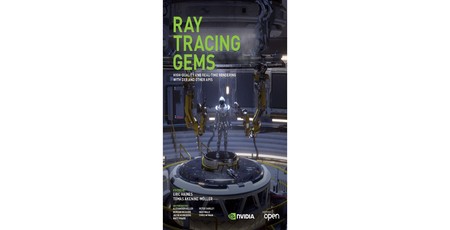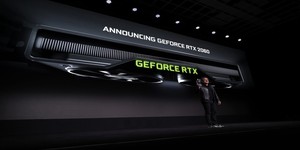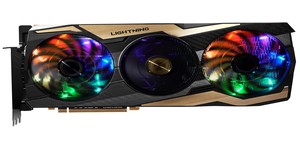
Nvidia has announced it is to publish a book encouraging developers to begin adding ray tracing capabilities to their games in the face of lower-than-expected sales for its high-price RTX family of graphics cards.
Launched initially for the professional market, where its ray tracing and Tensor acceleration cores can be used for computer aided design (CAD) and deep learning tasks, Nvidia's Turing architecture has proven a hard sell since being announced for the consumer-oriented GeForce family. The ray tracing cores can, as the name suggests, be used to improve the visual quality of games using a hybrid rendering system, but early performance was poor and the cards launched with little support for the functionality from developers.
That's something Nvidia is looking to correct, as it saw its share price slump due, in part, to lower-than-hoped-for sales of the Turing cards. Its latest attempt at boosting developer interest: A book on real-time ray tracing, which it is making available for free to members of the company's developer's programme.
Dubbed Ray Tracing Gems, the book - featuring input from 60 contributors, edited by Eric Haines and Tomas Akenine-Möller - has already won support from J. Turner Whitted, author of the 1979 paper An Improved Illumination Model for Shaded Display' which first brought the concept of recursive ray tracing to the world of computer graphics. 'The introduction of explicit ray tracing acceleration features into graphics hardware is a major step toward bringing real-time ray tracing into common usage,' he writes in the book's foreword. 'Combining the simplicity and inherent parallelism of ray tracing with the accessibility and horsepower of modern GPUs brings real-time ray tracing performance within the reach of every graphics programmer. However, getting a driver‘s license isn't the same as winning an automobile race. There are techniques to be learned. There is experience to be shared. As with any discipline, there are tricks of the trade. When those tricks and techniques are shared by the experts who have contributed to this text, they truly become gems.'
The first part of the book has been published to the Nvidia Developer Zone under a Creative Commons Attribution-NonCommercial-NoDerivatives 4.0 International Licence - mischaracterised in Nvidia's promotional material as the far more permissive Creative Commons Attribution 4.0 International Licence, which would permit commercial use and the creation of derivatives forbidden by the actual licence used.

MSI MPG Velox 100R Chassis Review
October 14 2021 | 15:04








Want to comment? Please log in.